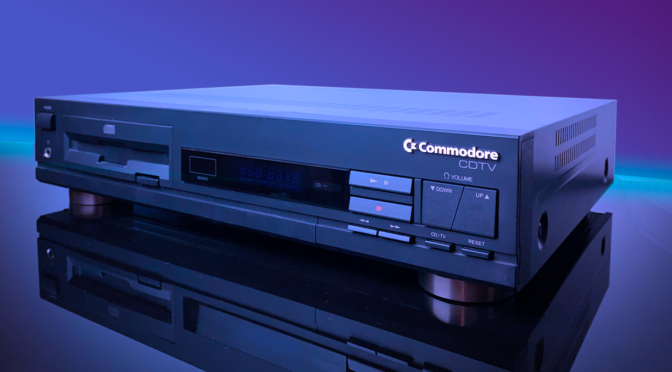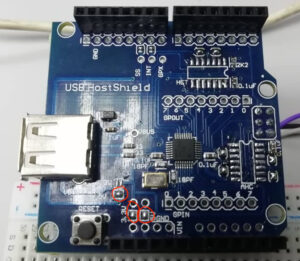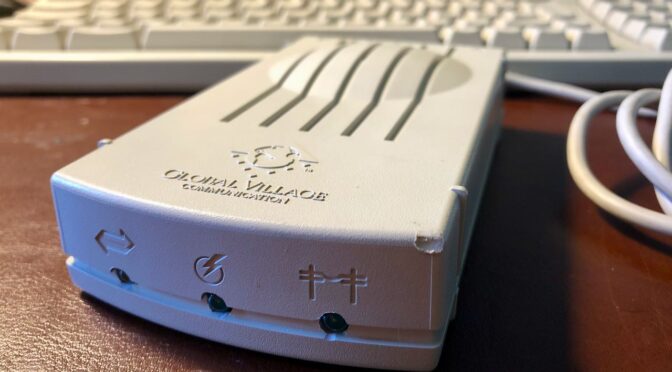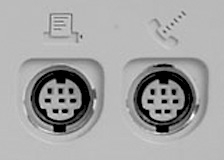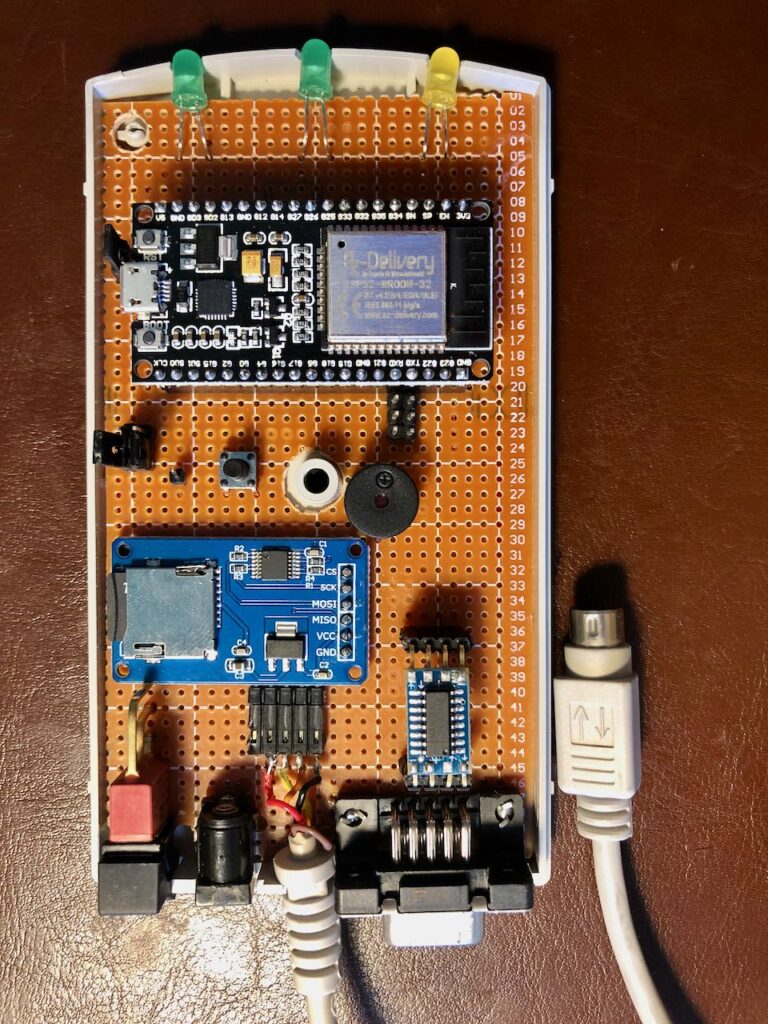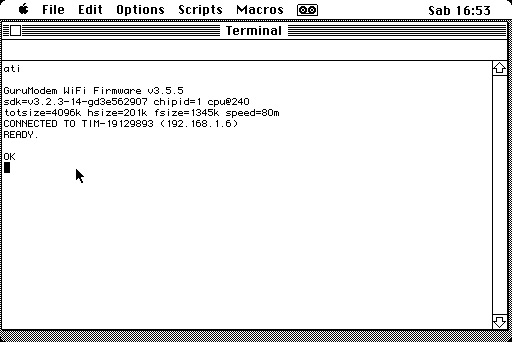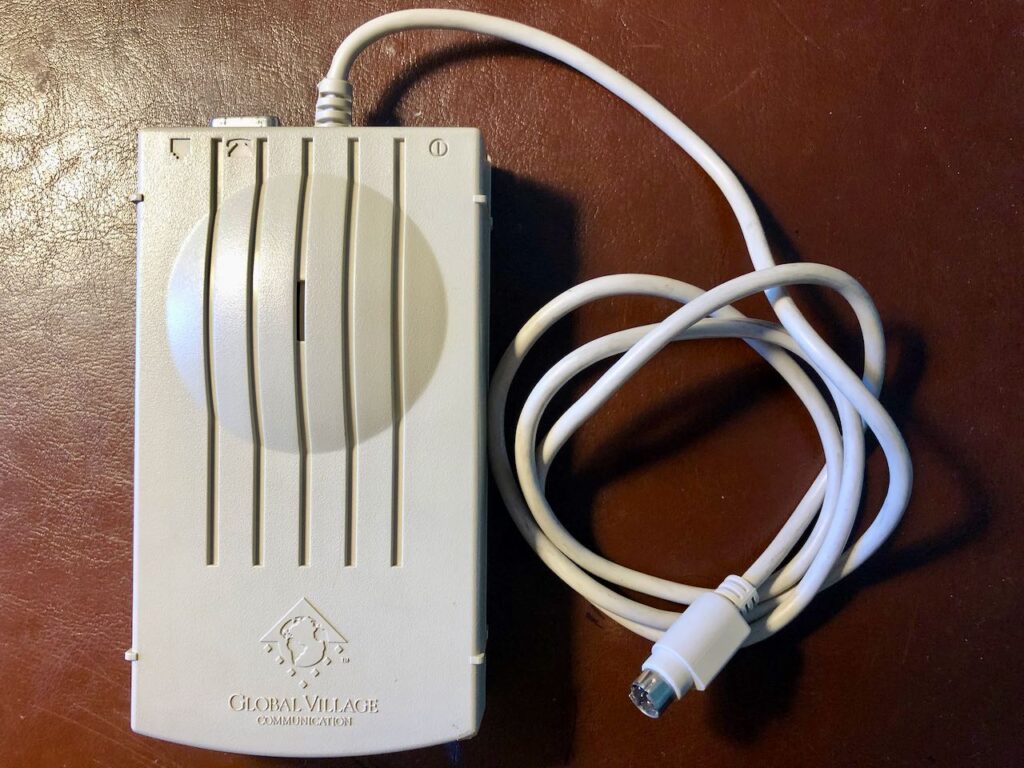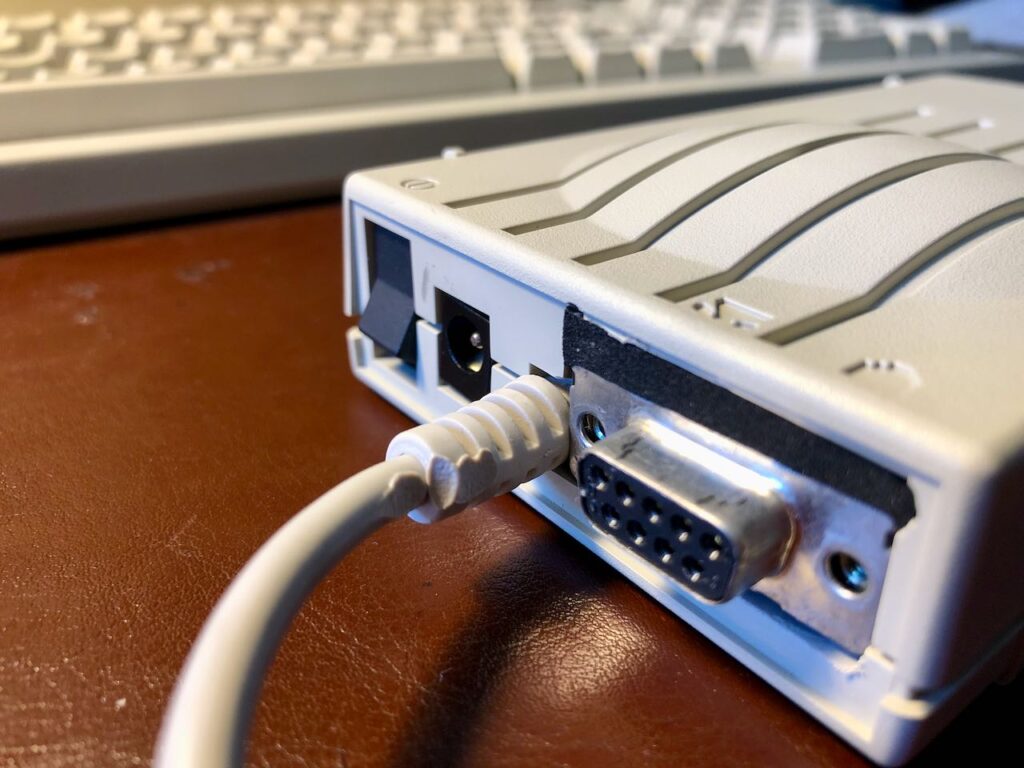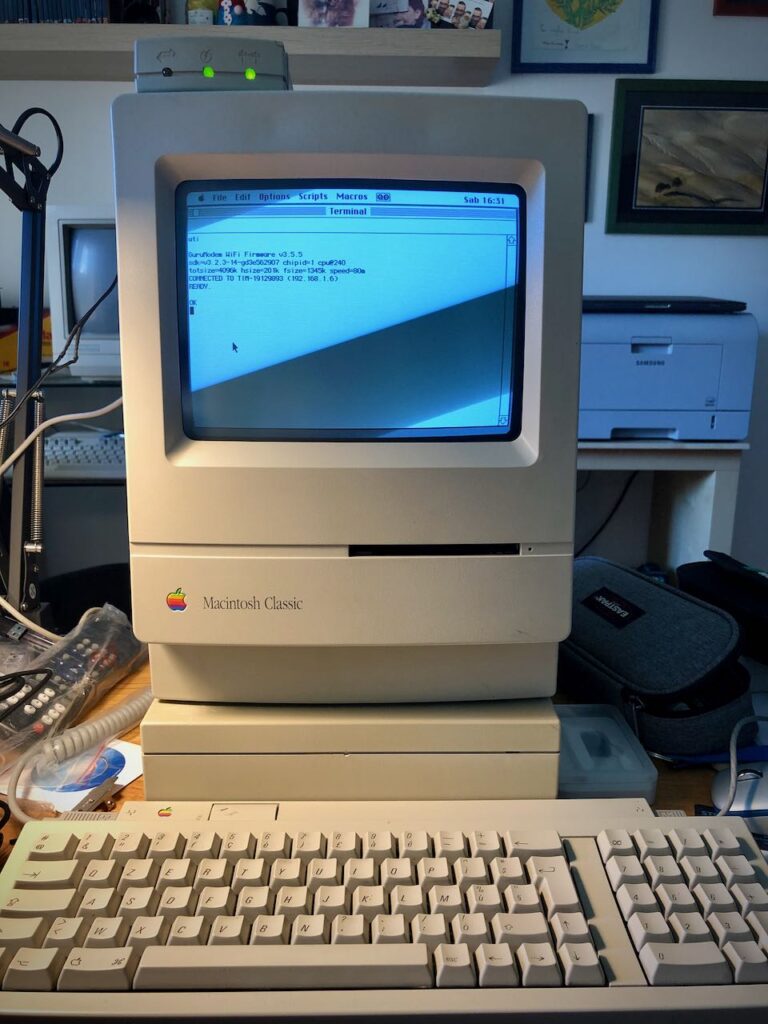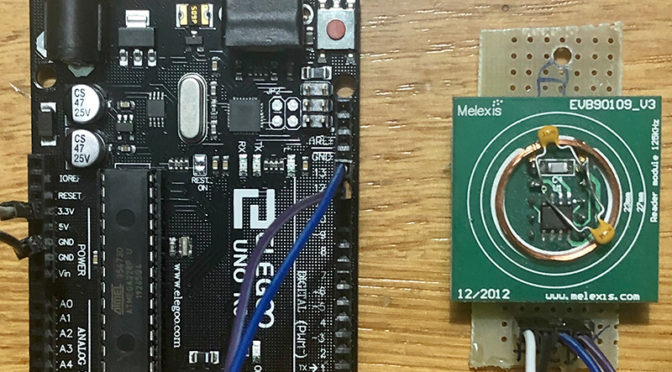Tra la mia collezione annovero un esemplare del Commodore Amiga CDTV che acquistai molti anni fa. Purtroppo a parte l’unità principale non ho tastiera né mouse originali, molto rari e soprattutto costosi oggigiorno. Così, a parte ripulirlo e accenderlo ogni tanto, lo tenevo sul tavolo a prendere la polvere.
Finchè un giorno trovo quasi per caso su Github questo progetto: SvOlli/USB2Amiga. Lo scopo dell’autore è quello di costruire un’interfaccia per collegare un mouse o una tastiera USB al CDTV. Il progetto fa uso di un Arduino Pro Micro e una shield USB host mini.
Schema e componenti utilizzati
Dal momento che non avevo gli stessi componenti da lui utilizzati, ho adattato il progetto utilizzando un’Arduino Nano e una shield USB host full a 5 volt con un kit tastiera + mouse wireless Logitech per avere entrambe le periferiche e un’unica interfaccia. Con somma soddisfazione ho scoperto che il firmware funziona perfettamente senza alcuna modifica. Attenzione: come riportato dallo stesso autore non è possibile utilizzare un hub USB. Il kit logitech utilizzato sfrutta un’unico dongle per entrambe le periferiche.
Altro pregio dell’interfaccia è che non necessita di un alimentatore esterno perché si alimenta direttamente dal CDTV.
Riepilogando, per costruire l’interfaccia servono i seguenti componenti:
- Arduino Nano
- Shield USB host 2.0 full 5 volt
- Connettore MiniDin 4 poli
- Connettore MiniDin 5 poli
- Logitech MK295 Kit Mouse e Tastiera Wireless o equivalente
Realizzazione e collegamenti
Per la realizzazione non ho fatto altro che seguire il mio schema e fare un po’ di saldature. I connettori sono quelli che hanno richiesto più tempo e pazienza, per il resto non ci sono particolari difficoltà se si ha un minimo di manualità e di esperienza nella saldatura a stagno (la mia è davvero basica).
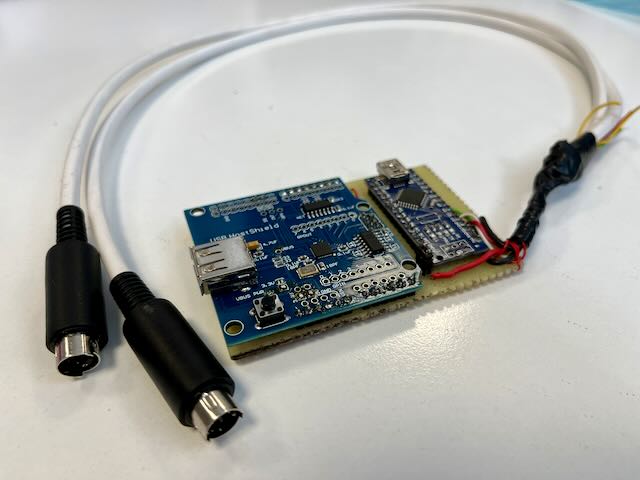
Il firmware fa uso della libreria USB Host Shield Library 2.0. La shield USB che ho acquistato su Amazon ha richiesto un po’ di lavoro e di sbattimento per la totale mancanza di documentazione e supporto. La mia ha richiesto la saldatura di 3 piazzole per farla funzionare a 5 volt.
Una volta verificato il corretto funzionamento della shield attraverso gli esempi che accompagnano la libreria, ho caricato il firmware USB2Amiga, ho attaccato il dongle USB e i due connettori dietro al CDTV. E funziona!
Non ho avuto modo di provare altri kit tastiera+mouse però quello che già possedevo funziona egregiamente.

